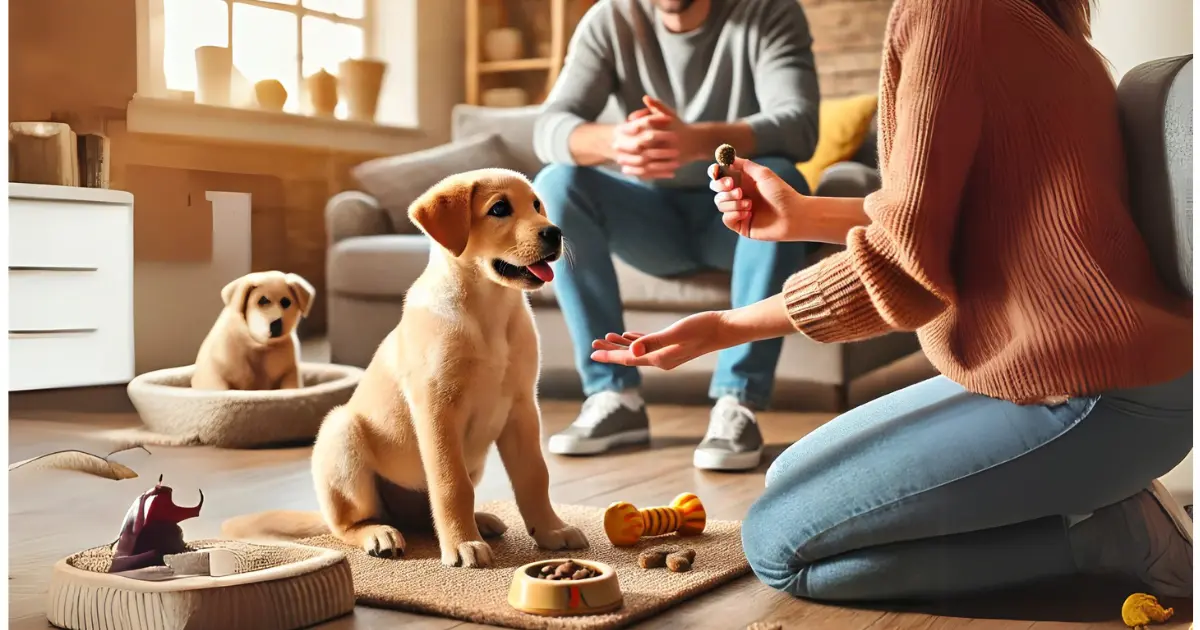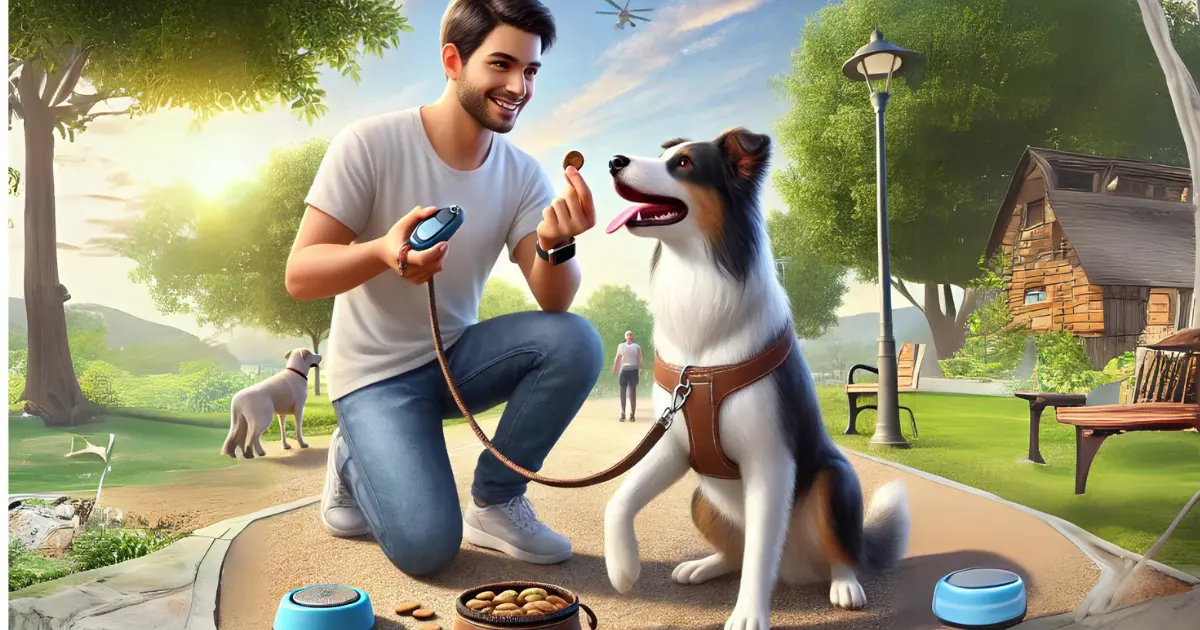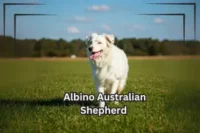10 Easy Ways to Improve Your Dog’s Behavior
Published: 26 Jan 2025
Training your dog can feel overwhelming with all the advice out there—what works? Whether your dog ignores commands, pulls on the leash, or struggles with bad habits, you’re not alone. The good news is that with the right approach, training can be simple, fun, and rewarding for you and your dog. You can achieve lasting results by focusing on shaping your dog’s behavior. Imagine walking through the park with your pup responding perfectly to your commands—it’s possible! This guide breaks down the best dog behavior tips to help you build a stronger bond and turn your dog into a happy, well-behaved companion.

1. Start Training Early
If you’ve got a puppy, congrats—you’re starting at the perfect time! Puppies are like little sponges, absorbing everything around them in their early months, which makes teaching them basic commands a breeze. But if your dog isn’t a puppy anymore, don’t worry—it’s never too late to teach them new things. Older dogs can learn; they might need more time and patience.Following a structured daily dog routine can help reinforce consistency and build good habits.”
Pro Tip: Begin with simple commands like “sit” or “stay.” When I first taught my dog Max to sit, he looked at me like I spoke a foreign language. A few pieces of chicken later, he sat every time I said the word. Consistency (and treats!) makes all the difference.
2. Make Good Behavior Worth It
Let’s face it: dogs don’t do things out of the goodness of their hearts—they’re in it for the rewards. Whether it’s a tasty treat, belly rub, or a cheerful “Good boy!” they thrive on positive reinforcement. The more they associate good behavior with something they love, the more they want to repeat it.Healthy options like Blueberry Dog Treats can make training even more rewarding.”
Example: When your dog comes after you call their name, reward them immediately. It doesn’t have to be a big treat—just something special lets them know they nailed it.
Tip: My Labrador, Daisy, will do anything for cheese. Find out what your dog loves most and keep it handy during training!
3. Be Consistent, Always
Dogs thrive on clarity. If you use “down” one day and “lie down” the next, you’re going to confuse them (trust me, I’ve been there). Pick one word or phrase for each command and stick to it. Consistency makes it easier for your dog to understand what you want.
Why It Matters: It’s like speaking the same language—when everyone in your household uses the same commands, your dog will pick things up faster.
Tip: Writing down a list of the words you use helped me (and everyone else) stay on track.
4. Keep Training Short and Sweet
No one likes long, boring lessons—especially not dogs. Keep training sessions about 5–10 minutes short and spread them out during the day. This way, your dog stays focused, and you both end on a positive note.
Quick Idea: Finish every session with a win. If your dog gets a command right, give them a treat and a happy “Good job!” before stopping. They’ll look forward to the next session.

5. Introduce Your Dog to the World
Socialization isn’t just about making your dog friendly—it’s about helping them feel confident in new situations. Dogs who experience a variety of people, places, and environments early on tend to behave better overall. Learning some fascinating dog facts about their behavior can help you better understand their socialization needs.”
How to Start: Take your dog to the park or a dog-friendly café. Let them meet new people (if comfortable) and explore new smells and sounds.
Fun Idea: Puppy classes are a great way to socialize your dog and teach it basic manners.
6. Patience Is Your Best Friend
Let’s be honest—not every dog gets it right the first (or tenth) time. That’s okay! Training takes time, and every dog learns at their own pace. Some days will feel like a win, and others not so much.
Encouragement: When my dog struggled with “stay,” I broke it into smaller steps. First, I rewarded him for staying in place for just a second. Over time, we built it up, and now he stays until I release him. Small progress is still progress.
7. Use Treats They Can’t Resist
If you’re using treats in training, make them something extra special. Small pieces of chicken, cheese, or freeze-dried liver are usually irresistible. These high-value treats can grab your dog’s attention, especially when teaching new commands.
Tip: Keep the treats small to reward them often without overfeeding. If your dog has dietary restrictions, try low-calorie options like carrots or store-bought hypoallergenic treats.
8. Focus on One Thing at a Time
Teaching too many commands at once can overwhelm your dog. Please stick to one behavior until your dog has mastered it, then move on to the next. Repetition is key to helping your dog remember what they’ve been taught.
Pro Tip: Start with basic commands such as “sit” or “stay” to establish a strong foundation. Once these are consistently improved, introduce more advanced commands like “heel” or “leave it.”

9. Use Tools That Work for You
The training tools you use can affect how fast your dog learns. Fundamental equipment, such as a sturdy leash, a fitted harness, and a clicker, forms a strong base for achieving success. Clickers work best in precisely marking a dog’s movements.
Example: When training my dog Bella, as soon as she responds to the “stay” command, I click and follow it with a treat. This clear feedback helps her associate the action with a positive outcome.
10. Make It Fun
Training should never feel like a chore—for you or your dog. Adding games and play to your sessions keeps things exciting. Dogs learn faster when they’re having fun.
Activity Idea: Hide your dog’s favorite toy and teach them to “find it.” It’s a great way to blend training with mental stimulation. My dog goes crazy for this game!
Bonus Tip: Call a Pro When You Need Help
Training can sometimes feel overwhelming, particularly when addressing challenging behaviors. If you encounter difficulties, it is advisable to seek the assistance of a professional trainer. They can provide tailored guidance to meet the specific needs of your dog.
Final Thoughts
Training your dog doesn’t have to be a daunting task. With patience, steady effort, and a touch of creativity, you can achieve great things. You can teach your dog new skills and build a fantastic bond. Each dog learns quickly, so don’t forget to celebrate the little wins. If you know more about Dog Behavior visit this site Understanding Canine Behavior – American Kennel Club
FAQ
1. How can I make training enjoyable for my dog?
Incorporate their favorite games, mix up routines, and keep sessions upbeat. Rewarding effort with enthusiasm makes learning an exciting experience.
2. Why does my dog listen at home but not outside?
Distractions in new environments make it harder for dogs to focus. Gradually increase exposure to different settings while reinforcing commands.
3. What should I do if my dog gets distracted easily?
Start training in a quiet space and slowly introduce distractions. Using high-value rewards and keeping eye contact helps maintain focus.
4. How do I teach my dog to stay calm around strangers?
Gradual exposure to new people with positive reinforcement helps build confidence. Encouraging calm behavior before greetings can prevent overexcitement.
5. How can I reinforce training when I’m busy?
Integrate commands into daily activities, like practicing “sit” before meals. Brief, spontaneous sessions throughout the day are highly effective.
6. What’s the quickest way to stop unwanted barking?
Identify triggers and redirect attention to an alternative activity. Rewarding quiet moments reinforces the desired behavior over time.
7. How do I handle stubborn behavior during training?
Stay patient and adjust techniques to suit your dog’s learning style. Shorter sessions with extra motivation often yield better results.
8. Is it necessary to train my dog every day?
Consistency matters more than frequency, but daily practice reinforces learning. Even a few minutes can strengthen skills and understanding.
9. Can I train my dog without using verbal commands?
Yes, hand signals and body language work well as visual cues. Many dogs respond effectively to consistent gestures.
10. What’s the best way to reward my dog without food?
Praise, toys, and extra playtime serve as excellent motivators. Finding what excites your dog most ensures positive reinforcement remains effective.

- Be Respectful
- Stay Relevant
- Stay Positive
- True Feedback
- Encourage Discussion
- Avoid Spamming
- No Fake News
- Don't Copy-Paste
- No Personal Attacks



- Be Respectful
- Stay Relevant
- Stay Positive
- True Feedback
- Encourage Discussion
- Avoid Spamming
- No Fake News
- Don't Copy-Paste
- No Personal Attacks





